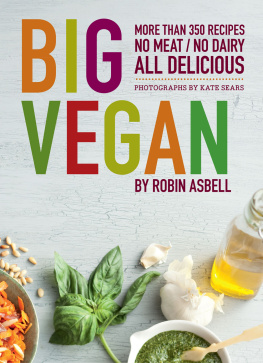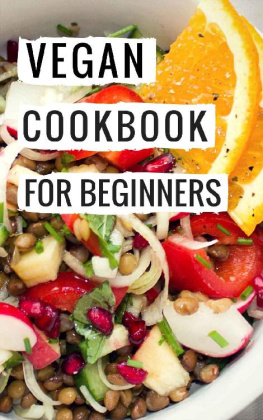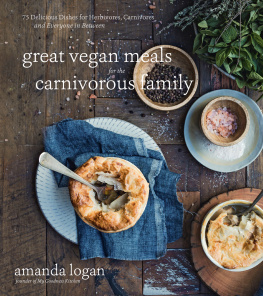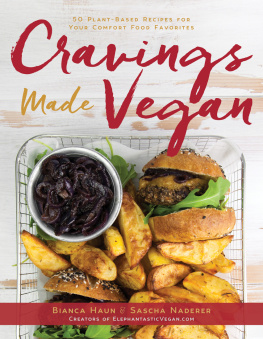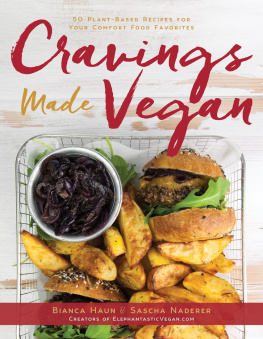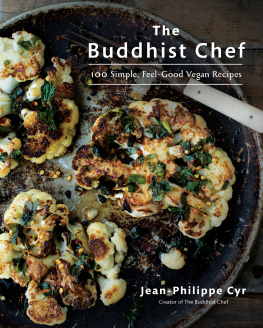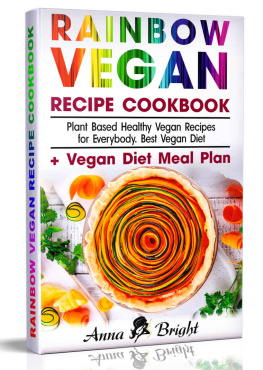Text copyright 2011 by Robin Asbell.
Photographs copyright 2011 by Kate Sears.
All rights reserved. No part of this book may be reproduced in any
form without written permission from the publisher.
Library of Congress Cataloging-in-Publication Data available.
ISBN 978-0-8118-7467-0
Chronicle Books
680 Second Street
San Francisco, California 94107
www.chroniclebooks.com
Id like to thank my sweetheart, Stan, for accompanying me on this and all my journeys. As always, my family and friends were a source of joy and support in the work of making this book.
My agent, Jennifer Griffin, was invaluable as an editor, advisor, and hand-holder, and I am truly grateful. All the wonderful people at Chronicle Books made the process fun and contributed to the final product in ways great and small. Special thanks to Bill LeBlond, Amy Treadwell, Doug Ogan, Alice Chau, Tera Killip, Peter Perez, and David Hawk, who brought the book to life.
My recipe testersLisa Genis, Crystal Grobe, Marge Porter, Liz Nerud, Joy Harris, Jane Gordon, and Kristine Vickgave me invaluable feedback, and I cant thank them enough. Special thanks go to Deanne Klevander, for volunteering her very sharp eyes and organized mind.
A collection of my colleagues also contributed to this project, with wit, advice, and support: Sandra Gutierrez, for Guatemalan recipe advice and more; Zoe Francois and Jeff Hertzberg, for their bread techniques; Tara M. Desmond, for support and almost-vegetarian things; Antonia Allegra, for constant inspiration; Jill OConnor, Nancie McDermott, Cheryl Sternman Rule, and my IACP friends, for keeping me laughinga very valuable thing.
I am also grateful for all the wonderful cooking schools that have hosted my cooking classes and helped me get real food to the people.
Vegan is getting bigger all the time, so welcome to the party!
Some of you may be committed, long-time vegans, and some of you may just be starting to investigate this way of eating. Some of you may just want some great plant-based recipes to help you cut back on animal foods. You are all welcome, and there should be something for everyone in this book. Eating great foods that just happen to be animal-free is good for your health, good for the environment, and good for the animals, so every time someone chooses vegan, we all win. With even just one plateful, clean plant-based food makes a difference.
Eating this way is a celebrationa celebration of you nourishing yourself while reveling in the sensuous cuisine that springs from a nourished planet. Its a celebration of the colors, tastes, scents, and textures that emerge from the soil and all the energy they possess. Feeling great, looking good, and doing good for the planet is just one big party, with no hangover the next day. As much as we look to food for pleasure, the ultimate hedonism is great health. Sure, junk food has its fleeting buzz, but living in a nourished body is a long-term plan for serious fun. Who doesnt want to have more energy and avoid chronic disease? The most powerful tool for accomplishing a vibrant state of being is your plate.
The plant-based food party is coming into its own place in the world. Good food is good food, transcending labels. Anyone who has ever eaten a crispy-hot slice of hearty bread spread with melting peanut butter and jam for lunch was enjoying a vegan meal with no label attached. Sublime pleasures like a perfect, ripe peach; a just-picked juicy tomato still warm from the sun; or a handful of crisp pistachios come from plant cuisine at its most basic. Hand those over to creative chefs, and a whole world of flavors and textures begs to be explored. Many of the most respected culinary minds, including Thomas Keller and Charlie Trotter, now explore plant-based cuisine in their world-famous restaurants. Making amazing food from pure, simple ingredients gives them a chance to show that they really understand food. Working without animal products makes them stretch, drop old ways of thinking, and work a little harder to produce something that people will pay top dollar to experience. And, like me, they look to the history and the ancient traditions of eating low on the food chain. We have come full circle.
Eating well has always involved plants. Every great cuisine of the world has dishes that revel in the textures and flavors of vegetables, fruits, nuts, beans, and good oils. Peasants ate this way out of povertythe cucina povera of Italy is the source of some of the most robust, decadent, animal-free dishes on the planet. Every country that touches the Mediterranean Sea has its own form of vegetable worshipfrom Spanish romesco to Greek hortika in olive oil to Lebanese hummus and Syrian eggplant in pomegranate molasses. The Mediterranean diet, that lifelong prescription for pleasure and health, goes vegan without skipping a beat. The real Mediterranean diet was flexitarian before we had a word for it. Hardscrabble living consisted of eating things you could grow most of the time, since eating animals was expensive. Luckily, one of their native plants was the olive, so they could drench their healthful food in its richness and in the process, create a life-saving cuisine that we aspire to today. Wine, plant foods, and songhow can you go wrong?
Looking to the East, we see the influences of Buddhism and other peaceful philosophies have planted seeds for plant-loving cuisines that flourish to this day. In the traditional Chinese kitchen, we find masterpieces made from plants. Can you imagine a world with no soy sauce? There must be a bottle of that simple, fermented black elixir in every kitchen in the world by now. Like the Mediterranean way, traditional diets all over Asia are plant-baseda little bit of animal, stretched across an expanse of rice and a crisp-tender jumble of stir-fried vegetables, or perhaps simmered into a miso soup with the best vegetables available for the season. Its easy to go vegan with such a plant-filled plate. A few thousand years ago, China turned away from dairy foods. Its unclear whether it was to differentiate from the Mongol herders, or perhaps an emperor was secretly lactose intolerant. Either way, one of the worlds most ancient civilizations has been making magic without dairy for quite awhile, and we still reap the benefits. Tofu is also attributed to the Chinese, so tip a hat to those soybean alchemists.
More tropical Asian cultures, like Thailand, Malaysia, and the Pacific Rim, bring us light, plant-based food born of sizzling heat and tropical plants. Coconut milk and chiles, exotic spices, and fermented beans make a light, summery meal taste rich and satisfying. In tropical climates, everybody wants to eat foods that wont weigh them downand vegans like that feeling, too. How sexy is a rich coconut sauce, spiked with heat and spice, punched up with touches of sweet and sour, flecked with fresh herbs? You could put it on anything and it would sing, but it really speaks when gentle plants hold it high.
India, where vegetarian traditions are strong to this day, has much to teach us about making satisfying plant cuisine. After a few thousand years, they have worked out complex spice and flavor balances that elevate the simplest potato to gourmet fare. Dal and rice are the national dish, and variations are endless. We can borrow many of their classic, time-tested cooking techniques and combinations, and work around their yogurt and cheese. A symphony of spice, a subtle play between soft and crisp, a teasing touch of sweet, then a hint of sourthe experience in a mouthful of curry is so intense that it needs only simple plants to carry it.

